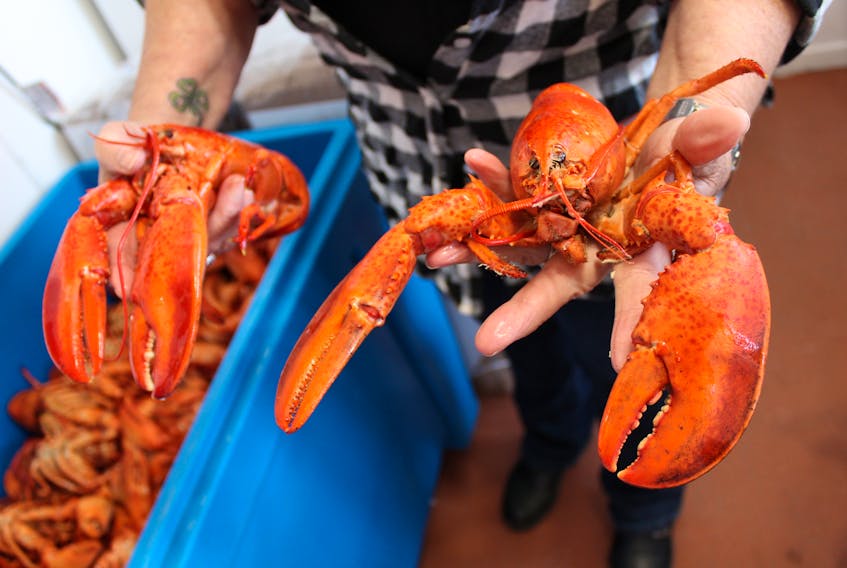SYDNEY, N.S. — Radiofrequency technology developed by a Nova Scotia company that helped to power rocket engines will soon be used to extract valuable byproducts from lobster shells at Cape Breton University.
The new aspect of the Aethera Technologies Ltd. of Halifax innovation is a containerized lobster drying system for researchers at the Verschuren Centre at the university who are extracting materials from the shells to create sustainable plastics, among other things.

“Typically, when you have a product like that, that is really wet, there’s not much you can do with it in a wet form,” said Tim Hardy, Aethera’s chief technology officer, about the shells.
“It’s heavy and unstable and is going to basically go bad really fast. We had been working on our technology and recognized that drying is a big broad industrial problem, so we were looking for opportunities to do drying work in innovative ways.”
Aethera’s core expertise is in radiofrequency power sources.
In January, the Ad Astra Rocket Company in Texas used a new generation radiofrequency power processing unit built by Aethera while developing electric rocket technology for spacecraft propulsion.
The Verschuren Centre will use a new application of the technology as a microwave like the radiofrequency system to dry shells in bulk, at low heat, to avoid burning and allow valuable compounds to be extracted.
“What we needed from this technology was a kinder drying method because a lot of the materials from food processing, like the shell, have valuable components in them that would be damaged by extreme heat,” said Beth Mason, CEO of the Verschuren Centre.
“Their process will dry these products for us, which stabilizes them, which then allows us to take that product and use a kind of fractionation method we developed and pull out those high-value molecules.”
Biopolymers, proteins and mineral compounds will be extracted from the shells and used in water treatment, agriculture, food products, nutraceuticals, pharmaceutical products and biomedicine.
The biopolymer known as chitin is a particularly valuable shell component to the Verschuren Centre’s work with other companies who are making sustainable and recyclable plastics.
“I mean there’s a stark contrast between the volumes of shell materials that go to waste, generally in the landfill, and the high value of the molecules if you can get to them,” Mason said.
“Then, of course, that fits nicely with the latest desire to change our plastics use habits and change the formulations of plastics so that if they do end up in the ocean they biodegrade, rather than become the plastic microbeads everyone is concerned about.”

The new system is expected to be delivered to Cape Breton in late November and online in December and will replace a large drying oven the CBU researchers are currently using in their studies.
Mason said the current system takes a long time to dry shells and uses ‘an awful lot of energy.’

“The plan is to have 2-3 tonnes per day drying capacity with this one unit. Because it’s containerized, we can just replicate that as the volume goes up.”
The technology is expected to work well for them and, in turn, Mason hopes it will help create a market for the drying product in other areas.
Hardy described that aspect of Aethera as a growth strategy that could see the company become a manufacturer of similar power sources and the systems they go into.
The ‘bread and butter side’ of their business, though, is consulting and research and development in related technology.
“That’s a harder space to grow in so the manufacturing of the power sources is our growth strategy,” he said. “COVID has slowed us down a little bit because we’d like to get out and talk to people. Most of our clients would be outside of Nova Scotia. This is great that we have a client in Nova Scotia, and it is obviously easy to do business at home. It’s so convenient. If there’s a problem we don’t have to get on a plane. Nevertheless, we have to get out and talk to people and most of our growth would have to come outside of Nova Scotia.”
Aethera was incorporated in 2014 and currently has 11 full-time employees, five part-time workers and hires consultants as needed.
At the Verschuren Centre, 10 researchers, senior researchers and students will work on the shell drying process and related extraction research.









